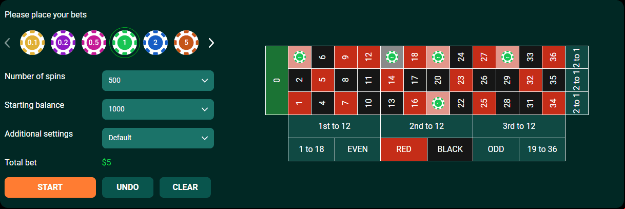Roulette and the Illusion of Hot and Cold Numbers
In many RNG and live roulette games, you’ll notice a “hot & cold numbers” section on the interface. This section shows which numbers have appeared most frequently (hot) and which have appeared the least frequently (cold) over the last 50 spins, for instance. Developers included this feature at the request of players, as many, including professionals, believe in the “mystical power” of these numbers.
The belief is that cold numbers are more likely to come up soon. For example, if 19 of the last 20 spins have been “red,” then red is “hot,” and it might seem that “black” (cold) is more likely on the next spin.
If this seems logical to you, then a quick lesson in probability theory and the gambler’s fallacy is needed. In this article, we’ll explain why the belief in hot & cold numbers is unfounded.
Understanding the Issue with Hot & Cold Numbers Statistics
Let’s break this down as simply as possible. In games where each event depends on the previous ones, past outcomes can influence future results. For instance, in a game like blackjack using a single deck, there are 52 cards at the start, and the number decreases as you play. The frequency of each type of card also decreases. If the “Ace of Hearts” has already appeared, it can no longer come up again—this past event has reduced the probability of a future occurrence to zero.
Makes sense so far, right? As the number of potential outcomes diminishes, eventually reaching zero, you can predict future outcomes based on past events, which is the principle behind blackjack card counting. If done correctly, it works.
However, this scenario is rare in casino games. Most games, like roulette, are based on independent events where past outcomes don’t affect future ones. According to probability theory, established by mathematicians in the early 1900s, if events are independent, they cannot influence each other. Each event has its own separate probability.
In mathematical , this theory is expressed as P(A∩B) = P(A) x P(B), but don't worry, we’ll break it down in a simple way. We can demonstrate how probability theory works with a basic example:
- Consider a coin toss game.
- There are two possible outcomes (heads or tails), each with a 50% chance.
- Let’s say you get "heads" 29 times in a row.
On the 30th toss, the probability of getting "heads" again remains 50%, and the probability of getting "tails" is also 50%. These probabilities are unchanged because they are independent events. One result does not influence the next, so even after 1,000 tosses, the odds remain the same. Simply put: with each toss, the odds reset.
This is exactly how roulette works. In single zero roulette, for instance, both red and black have a 48.64% probability of occurring. This probability remains constant, no matter how many times you play, because each spin is an independent event. Previous outcomes do not influence future ones. Believing otherwise is known as the “gambler’s fallacy” and can lead to losing money. Similarly, the idea of hot or cold numbers in roulette is meaningless. Hot & cold number statistics don’t have any real impact.
You can see this for yourself with our random number generator. We ran a simulation of 500 spins, and here’s what we found:

This table reveals the cold numbers. Let’s use our strategy tester to place bets on them and observe the outcomes. We bet 1.00 per straight bet, carried out 500 spins and started with an initial bankroll of 1,000:

Here are the results:

No Connection Between Past and Future Results
A high frequency of one outcome does not change the “chances” of other outcomes occurring. In games like roulette, where every spin is independent, past results have no significance for future outcomes. The house edge and RTP stay the same. The best strategy is to practice responsible gaming and manage your bankroll wisely: avoid the gambler’s fallacy.

